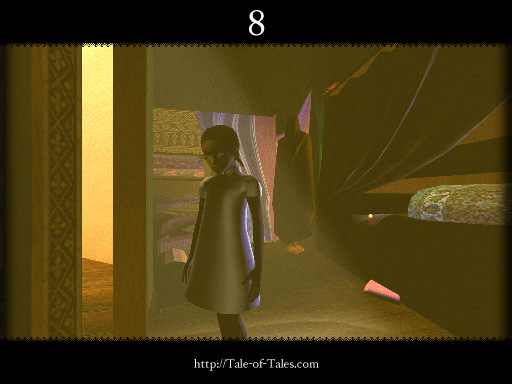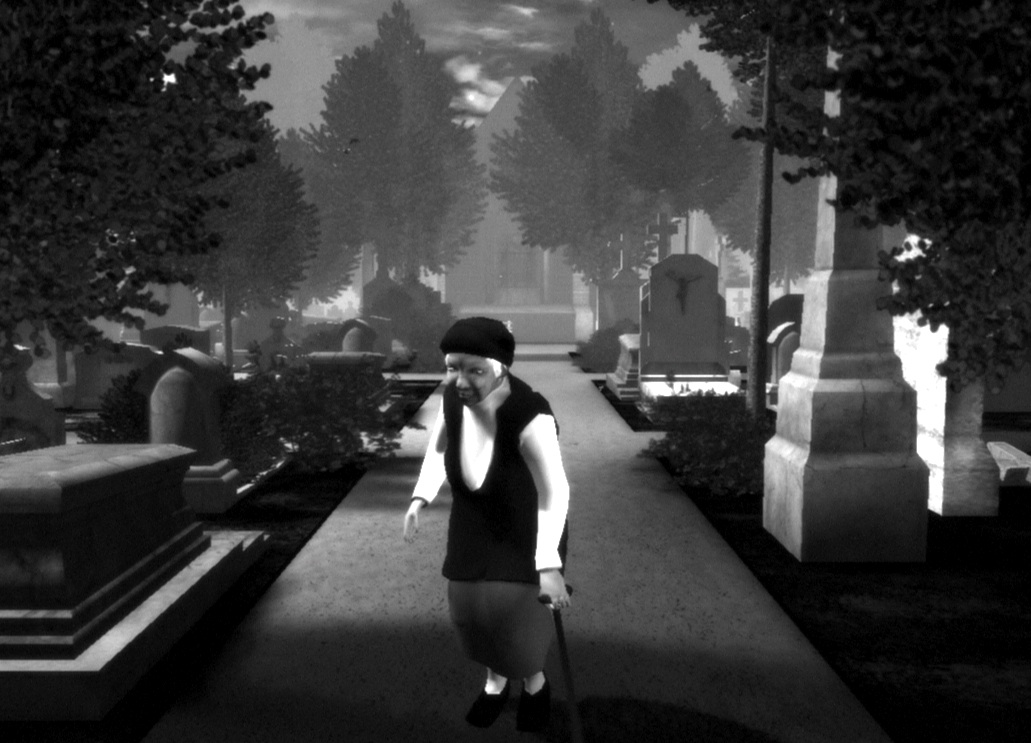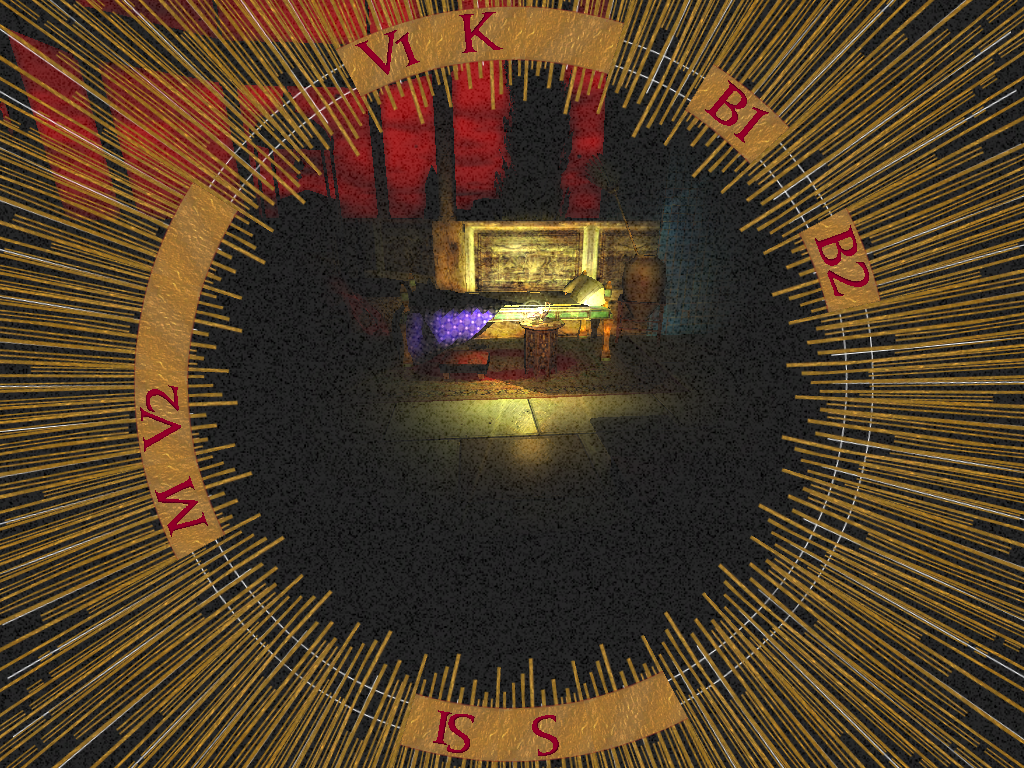
Tale of Tales (ToT) is a group dedicated to the creation of original interactive experiences. Founded in 2002 by Auriea Harvey and Michaël Samyn they currently have four (The Path, The Graveyard, Fatale and The Endless Forest) titles available for PC and Mac and one project on hold (‘8’). These titles are more akin to interactive poems or storybooks than what would be traditionally be regarded as a ‘game’, but they are engrossing experiences that form deeper ties with your avatar during the short time you spend in their worlds than most games achieve in ten hours.
This interview was submitted a few weeks before Fatale’s release (currently available from the ToT web site) so please forgive any continuity anomalies in my questions.
DF – What inspired you to found Tale of Tales?
ToT – Each other.
We started working together on the day we met for the first time, now 10 years ago. And we never stopped. First we made websites as Entropy8Zuper! and later videogames as Tale of Tales.
We switched to using video game technology because we saw an opportunity to really make the things we could only simulate or refer to in web technology. We played videogames once in a while. And they had had their influence on our work. But we had never considered making games ourselves. Even when we started working with the medium, we had no intention to make traditional games. That wasn’t the aspect we were interested in. We wanted to work with emergent narrative and emotional immersion.
DF – Looking at your manifesto you seem to have some very clear views on the direction artistic experiences in an interactive medium should take. From where did you draw these artistic principles?
ToT – The Realtime Art Manifesto sounds like a lecture but is actually more of a personal shopping list. It serves to remind us that, if we are artists, we should also be designers and if we are designers, we should also be artists. More than anything, the manifesto attacks purity, in favour of embracing.
Some of the ideas in the Manifesto come from witnessing a kind of ambiguity in other creators. We want to stimulate the fine artists to take the medium of games seriously and really make things with it, rather than cynically mod some engine from their ivory towers. And on the other hand, we want to encourage game designers to take up their responsibility as authors, to really think about what they are doing and try to contribute something to people’s lives and society.
Other ideas come from our own play experiences and often frustrations with games. Especially when it comes to the conflict between narrative immersion and the more sports-like aspects of games. We don’t think everything made with this medium needs to be competitive. There should be room for other types of experiences, other types of challenges.
DF – Your first project according to your site was 8, which remains on hold, could you tell me about the title and why it remains a work in progress?
ToT – “8” was our first game project, our first project as Tale of Tales. But we had worked on many other projects before “8”, as Entropy8Zuper!.
“8” was to be a fairly large game that takes place in the palace of Sleeping Beauty, during the spell of sleep. The premise of the story is that the princess of the fairy tale never woke up because the wicked fairy returned and sent 8 false princes into the palace, over several centuries. The goal of the game is to figure out how these false princes broke the spell and correct the situation so that the princess and her court may finally wake up.
At the time, we were not able to raise sufficient funding for the production of “8”. Which became one of the reasons why all of our subsequent projects were much smaller in scope. But we could never let go of the story of 8 and its dreamy world. So we always wanted to return to it in some form or other. In the mean time, we have come up with a plan to create a new game, based on the world of 8 but much less difficult to produce. If all goes well, we will start prototyping this project soon.

DF – How complete were you ideas of The Path when you began its development?
ToT – That depends a bit on what you consider to be the beginning of its development.
The idea to make a horror game with Little Red Ridinghood is as old as Tale of Tales itself. But it wasn’t until Creative Capital gave us a grant for the project that we really started working on it. The grant, however, was donated on the basis of a very high-concept description of the project. It took quite a while to get from there to a real design.
But for us the gameplay elements are secondary to the general atmosphere, themes and emotions we want to work with. In that sense, our ideas were quite complete when we started developing. The actual interaction, or even the idea to let go instead of pressing a button, for instance, came only during the development of the first prototype (the one that became a finalist in the Independent Games Festival). And elements such as the map and even the text on screen were added much later, during the play-testing phase of the project.
DF – What came first in your creation of The Path? Little Red Riding Hood or the theme of innocence, and how did one inspire from the other?
ToT – This is actually an interesting question because it betrays certain assumptions that explain how some people approach our work, or even art in general. We don’t make a distinction between the two. Thinking of Little Red Ridinghood implies thinking of innocence. And of all the other themes that the story touches on. That’s the power of narrative.
So when we say, we want to make a game about Little Red Ridinghood, we implicitly mean we want to make a game about innocence, loss of innocence, seduction, guilt, self-destruction, growing, etc. And we don’t choose Little Red Ridoinghood as some kind of metaphor to talk about these themes. We really want to deal with the story. It’s almost like a ritual. The story, telling the story, thinking about it, has value in and of itself, even if it may not directly mean or express anything. It’s like a heart beating or lungs breathing or a tree growing. Stories like that are part of human civilisation like organs are part of a body. That’s what makes them so fascinating.

DF – Little Red Riding Hood has been seen in dark forms before, but you emphasize a loss of innocence with a very modern theme, why did you develop The Path along such sexually suggestive lines?
ToT – We tried to stay as close to the story as possible. To look at it from different angles, yes, but only to see more facets of it, not to add meaning. Many versions of Little Red Ridinghood have a lot of sexual symbols in them. Perhaps in our version, these symbols are made a little bit more concrete. But a talking wolf may have been as concrete to people from the middle ages as a creepy young man in a playground is to us.
On the other hand, the experience of loss of innocence as a combination of extreme delight and violent destruction is something that is very personal to us. So to some extent, we probably used The Path to deal with our demons and lick some wounds. To try and make sense of what things that have happened in our own lives.
DF – Why did you break little red riding hood in to six desperate girls for the story?
ToT – Because 144 was too many! We were originally going to name The Path 144, when we fantasized about calling all our games numbers. So we wanted to have 144 different Little Red Ridinghoods. When that turned out to be impractical, we reduced the number to 6. It was fairly arbitrary. Probably motivated by the fact that the number 6 is often used to denote evil (the number 666 being the number of the Antichrist in the Bible).
We liked the idea of playing with girls with different personalities. And we also liked that they had relationships with each other, which makes the experience of the story stronger. It also adds to the ritualistic nature of telling a fairy tale. Many fairy tales have repetitive elements, sometimes it feels like the narrator is chanting. There’s something about rhythm, about repetition that transcends the rational. Doing something repeatedly somehow adds a certain layer of magic to it. Breathing, chanting, praying, playing. We felt that playing the same game six times would deepen the meaning of each individual story and lift the whole to a higher level.
DF – The Graveyard I believe was a side project you started while producing The Path. What motivated the project and its theme?
ToT – The idea of The Graveyard is older than the start of the production of The Path. But it often takes a long time for us to get from idea to production.
There were two high level motivations to our desire to create The Graveyard. One is formal: we wanted to experiment with realtime 3D in combination with minimal interaction, in order to focus on the narrative, the “being there”. The other is content: we want to create a tool that allowed us to investigate a little bit the idea of being old, of living with death nearby. The latter was probably influenced by Michael’s grandmother who was still alive at the time and very old but very lucid and very conscious of her own approaching death. She often talked about her dying and this made a big impression on us. And finally there was the inspiration of a real place, a cemetery in Belgium that Michael often visited as an adolescent in search of solitude and calm. The interesting thing about that place, that we tried to replicate in The Graveyard, is the harmonious coexistence of life and death, with the rows of graves being surround by slightly unkempt plants, flowers and birds and insects. We want to embrace death as part of life, and learn how to live with it. We don’t want to be afraid of death. We don’t want it to make us sad. Because it’s such a normal thing. We want to discover its beauty.

DF – What was the impetus behind releasing ‘the full version’ of The Graveyard when it offers such a similar experience to the demo version?
ToT – It was a cheeky gesture for sure. One should not underestimate the humour in our work.
But there was a serious side to it as well: we wanted to ask the question what you pay for when you buy a game. Do we really pay for 150 levels, 26 different kinds of shotguns or 7 races and 14 classes -as the publishers seem to think we do. Or do we pay for an experience? Something to happen to us that would not have happened otherwise. Something that stays with us. That we learn something from.
We also thought that it was very poetic that a difference that is so small, technically (it literally is the difference of checking one checkbox in the game’s code), causes such a huge difference, the biggest contrast imaginable to man: the difference between life and death. The fact that, in The Graveyard, the distinction is so small, is part of its message. Especially because despite of this minuteness, the experience is drastically different. You can know that an old person is going to die, and prepare yourself for it. But every time it happens, it comes as a shock. We wouldn’t want it any other way. And we also don’t want to ignore that experience or pretend that death doesn’t exist. Living life to the fullest includes having an acute awareness of death.
DF – Your latest project Fatale is taking its inspiration from than Oscar Wilde play Salome, that in turn took its inspiration from the biblical tale, what drew you to this story and how clear will its ties be to it religious origins?
ToT – Even in the Bible, the religious aspect of the tale of Salome is rather vague. Its only reason for being in the bible is to explain how John the Baptist died. The whole story is told in a single paragraph. But throughout Christianity, over the ages, the story has continued to pop up in arts and literature. So when Wilde took at as the starting point for his stage play, it wasn’t just the Bible he was thinking of. The story had already gathered a lot of other connotations and associations. Especially the idea of Salome as a femme fatale must have been important to Wilde, considering the ubiquity of this figure in 19th century art and Wilde’s own homosexuality.
We’re always attracted to these old stories. Not because they are old per se, but because they have been part of civilization for so long. Stories like these are like time travellers of which portraits have been made in different time periods. They are so much a part of our culture that it almost feels like each and every Westerner is born with a vague memory of them, as if the story of Salome has somehow become part of our DNA.
There’s many stories like this, of course. And there’s specific reasons why we chose to work with Salome.
First of all, we wanted to do something with the theme of femme fatale. We are interested in the combination of love and destruction that the figure of the femme fatale represents. But we wanted to investigate whether the femme fatale was really as evil as she was portrayed in the 19th century or if there was a part of this character that we could understand, on a human level, and perhaps even sympathize with somehow.
Wilde shows us the passion of Salome. His Salome is not a cool Siren who, unfeelingly, lures men to their deaths, but she is a hot blooded princess who falls in love with the one man who will not, who cannot return her emotions. From Salome’s perspective, John may be seen an “homme fatale”. He casts her into a desperation she can only deal with in a dramatic way. When she asks for the head of her lover, part of her has already died. It’s a sad story, when you look at it this way.
The thing we add to the story in FATALE is a look into the head of the victim. When John was alive, all he cared about was the Messiah. He was a bit of a workaholic and didn’t have time for earthly trivialities like love for a woman. But now that he is dead, things are different. How does this story look through the eyes of a dead man? A person who has all the opportunity in the world to see the facts from many different sides. The idea of this ultimate peace, brought on by death, attracted us.

DF – Fatale’s character designer is Takayoshi Sato, famed for his work on Silent Hill. What began your relationship with him and what did he bring to you creative process?
ToT – Our relationship began with us being fans of his work. Then we interviewed him for our blog and realized that we weren’t wrong. That he was one of very few people in the world who uses 3D modelling as an artform, as a new form of sculpting. It was disappointing to us to see how, after his move to the USA, his talent was not being used where it was most effective, in our opinion. So we wanted very much to show his work in a more optimal context.
When we came up with the idea of FATALE, with the idea of still characters in a style that is more realistic than what we’re used to, we immediately though of him. We shyly asked if he would want to be involved with the project and to our surprise he said yes.
I think his greatest contribution, apart from the sheer beauty of his models/sculptures, is probably the ambiguity of the character of Salome.
Rather than going for the look of a young girl, or that of a grown woman, he came up with a character that was both simultaneously. His Salome could by one of those girls who looks older than she really is and therefore confuses the grown-ups. Her age is hard to gauge and we rely on context to make our assumptions. Maybe she seems mature on the nightly terrace. But imagine her in a Japanese school uniform and she’ll suddenly look like a young teenager.
Her mood is also ambiguous. Sometimes she seems triumphant or even angry, other times she seems melancholy and confused. We really like all these different simultaneous layers.